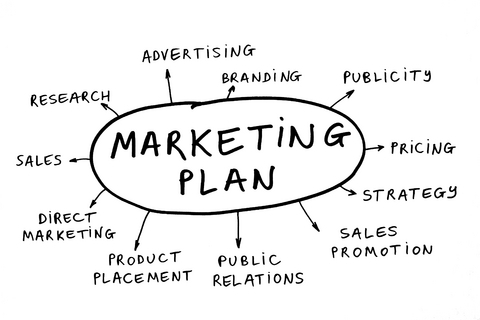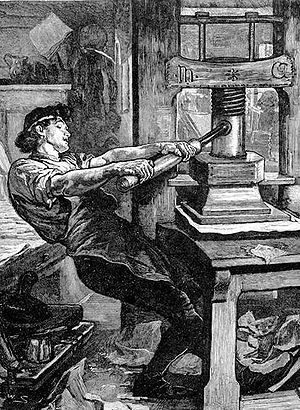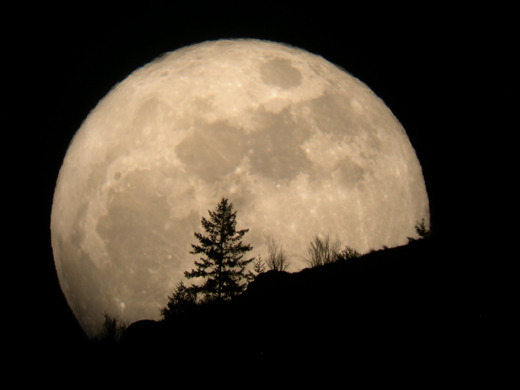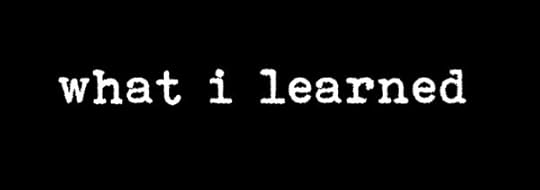M.K. Hobson's Blog, page 7
May 15, 2012
Kickstarters I’m Backing
I like doing this so much I’m going to make it a regular weekly feature! Here are this week’s projects, listed in order of urgency. They’re all incredible but I’d like to call your particular attention to the Reading With Pictures project, as it is VERY close to goal, VERY short on time, and has a VERY worthy mission. I hope you’ll have a look!
May 14, 2012
What is running a Kickstarter really like?
At 11:59 p.m. last night my Kickstarter came to a successful conclusion. We not only met but significantly exceeded our funding goal, and honestly, I am still kind of in shock about the whole thing. While the experience is still fresh in my mind, I thought I’d try to come up with an accurate metaphor for what running a Kickstarter is like, and I’m down to three contenders:
Running a Kickstarter is either like:
A non-stop 24-hour cross-country road trip in a parade float that you made yourself (with baling wire and crepe paper from the dollar store) fueled by frantic tap-dancing and the candy people throw at you.
Being Tinkerbell in the last scene of Peter Pan, except the last scene is 30 days long and even if a lot of children clap really hard, there’s still the chance you might wink out.
Getting tickled to death by squirrels.
(OK, that last one needs work, obviously.)
Now, I can’t yet say with any certainty what I did right or wrong, because I’m only done with the first part—the fundraising. The song-and-dance, the buck-and-wing, the ol’ soft shoe. The relentless self-promotion part was, I admit, rather fun, but it was also incredibly tiring. I don’t know how politicians, movie stars, or hookers do it.
With that part over, however, I now enter the less sparkly phase (that politicians, movie stars, and hookers frequently skip)—making sure that every promise I made, large or small, is fulfilled with perfect fidelity.
But having finished “Phase One” of this project to publish THE WARLOCK’S CURSE, I can at least share what things I did to prepare for it, and which ultimately proved most valuable.
Be ready for 100% commitment
Kickstarter success absolutely relies upon engagement and access. You have to be online just about 24-7. And you can’t just be present, you have to be engaged. Sure, you could spend all day and night tweeting “fund my neato Kickstarter” over and over—and it might actually get your Kickstarter funded, except that you wouldn’t be around to enjoy the proceeds of your ill-gotten gain for I personally would send a ninja assassin to put you out of my misery.
No, it’s not as easy as just hitting “tweet this” over and over. You have to spend that time scrupulously answering backer emails, sourcing last-minute bids on swags, tweeting about other peoples’ Kickstarters, commenting on blogs (without being a complete douche) and generally demonstrating geniality and bonhomie. Promoting yourself without being a dick about it requires walking a surprisingly fine line. Having a good backlog of content written and ready to post at a moment’s notice really helps. Sample chapters, articles, thoughts, humorous quips, whatever—all of these things are ways you can subtly call attention to yourself and your campaign without waving a big “give me your monies!” flag.
Get your web-house in order …
Before my Kickstarter went live, I retooled my Website entirely, optimizing it for speed and efficiency of content delivery. I ditched my free WordPress theme in favor of a sleek paid theme with a lot of additional features. I upgraded from my slow, shared Bluehost hosting to Rackspace cloud hosting. It was all expensive and time consuming, but according to Pingdom my site is now faster than 94% of all sites on the internet. Pingdom is also a great resource for finding out what’s slowing down your site so you can fix it. And making these kinds of improvements was not only important for my Kickstarter, but will serve me well as I make the transition into becoming a full-fledged e-tailer of my own work.
… And confirm all your methods of accessing that web-house are, too
Even if your Website is running like a dream, it won’t do you any good if your computer is a half-operational piece of crap held together with duct-tape and wishes. The middle of a Kickstarter is no time to have your hard drive crash. And honestly, if you don’t have a smartphone—get one. You will need it, especially if you (like some people I am) have a day-job that takes you away from home for 10+ hours a day.
Make sure you lay the groundwork before you launch
One thing that really surprises me is how many Kickstarter campaigns just seem to launch out of the clear blue sky. You should be building excitement and interest at least a month before the actual launch date. I created a mailing list for “presupporters,” offering to give them a special prize if they signed up and then went on to back the Kickstarter. I had about 100 people on the mailing list before the Kickstarter went live, and while I haven’t yet done a cross-correlation to see how many “presupporters” went on to become “backers” I’m guessing it’s a pretty good percentage.
Actively build good karma in all other areas of your personal life
Every single aspect of your “real life” will fall to pieces while you’re running your Kickstarter. You will fight with your spouse. You will neglect your children and your pets. You will fail to do the dishes, and you will eat lots of fast food. In short, your entire life will go to hell. Except online, where you will appear to be the most cheerful, pulled together, awesome person in all of existence. To minimize the inevitable emotional scarring, build up as much good relationship karma as you can in the weeks leading to your Kickstarter. Take care of whatever household chores you can in advance, have some dinners put up in the freezer (or at least make sure you program some take-out numbers into your phone’s speed dial), have babysitters on call if you have young. Otherwise, while your supporters may be clapping like mad, your loved ones will be looking around for the poison bottle.
By the way, if you have a day job? Scrupulous preparation is KEY. In the weeks before your Kickstarter, make a concerted effort get ahead on every single project. Schedule as much time off as possible. Understand that while your Kickstarter is running, your mind will be elsewhere. You will forget things, you will be checking that smartphone I mentioned, and you will be thinking more about that email from your last backer than next month’s TPS reports. Your lunch hours will be spent, not in reflective contemplation and relaxation, but hunched over your laptop, cursing the slow wi-fi at the local coffeeshop. All of this is another exceptionally good argument for only letting a Kickstarter run 30 days—because unless you’re Double Fine Games, a Kickstarter campaign is NOT worth losing your day job over.
Well, that’s everything off the top of my head. I’m sure my thoughts will be more cogent after I’ve had some time to digest this experience.
May 12, 2012
Just over 24 hours left …
And we are almost 20% over goal! People, that is INCREDIBLE! I couldn’t be more grateful, or more stunned.
As we approach the campaign’s final day, I wanted to let everyone know that even if you don’t get the chance to back this Kickstarter, you need have no fear, as most of the rewards will eventually be available to non-backers. Backers, of course, will get them first—but the ebooks, trade paperbacks, stories, etc., will all be available to the general public before the end of 2012.
There is, however, one thing that ONLY backers can get. And that is the GOLD version of the Tesla Industries Identification Pin, which you get when you back at the $45 level. In this, the creatively named “Backer Version”, the triangle will be rendered in shiny gold as shown below. If you see someone wearing this pin, it means they backed the Kickstarter from the beginning—or perhaps even before the beginning, as my presupporter-backers will be receiving this version as well. Once the Kickstarter is over, this version will not be available again (though it is possible I might resurrect it if I decide to do a Kickstarter for THE UNSTEADY EARTH.)

Tesla Industries Identification Pin: Backer Version (Gold).
For non-backers, I will also do a separate run of pins, same dimensions and everything, but the triangle will be rendered in yellow. This is the version that I will sell through my Website. As you can see, it will still be incredibly handsome and wonderful.

Tesla Industries Identification Pin: Public Version (Yellow)
And that’s it for tonight! I’m really not scraping for more contributions at this point, as y’all have already made me blush with your generosity. But I did want to put a last-minute message out there in case there are people who really want the gold version of the pin.
Marketing, publicity, advertising, and more
This is the second post in which I am answering questions sent to me by local author Amanda A. Allen. This time, they’re about publicity, advertising, conventions, and other marketing-type topics. And as I mentioned in the first post, if you have any questions you’d like answered, please leave them in the comments below!
 May I ask what you plan to do for promotion? I’ve read of so many different ways to draw in readers. I suppose that conventions and such are an obvious way.
May I ask what you plan to do for promotion? I’ve read of so many different ways to draw in readers. I suppose that conventions and such are an obvious way.
Conventions are great for meeting other industry professionals and hanging out with your friends. And there are some conventions I wouldn’t miss for the world. But honestly, they cost a lot of money (even if you’re a participant and your membership is comped, the other costs—food, hotel, and booze—won’t be), they are a lot of work, and they take a lot of time. And, bottom line, I just don’t know how many books they sell. I have cut way back on conventions over the past few years. I love them, but my free time is already pretty limited and I always end up feeling like it’s better used in writing more.
So what DO I plan to do for promotion? A lot of internet spade-work, honestly, just like I did with THE NATIVE STAR and THE HIDDEN GODDESS. I already spend so much time online that it’s pretty much my natural marketing element. As we approach the publication date, I’ll start putting myself out there, volunteering to do guest-blog spots, interviews, you name it. For the most part, internet outlets are always hungry for content, and providing content to the right ones is extremely valuable.
Have you been romancing any book bloggers?
The way you ask that question makes it sound like an activity with a beginning, middle and end. But it’s truly an eternal cycle. I am always romancing book bloggers and reviewers. And like any wooing, it has to be sincere. You can’t just run around telling everyone you love them … you have to pay careful attention to who is reviewing what, and what their tastes are, and target your romantic attentions on those individuals or outlets whose tastes seem to be in alignment with your own. Given the sheer number of sites out there, this can seem like a really daunting task (what I wouldn’t give for an eHarmony that would match bloggers with authors!) but the alternative—the indiscriminate scatter-shot technique, is not only disrespectful, but can also make someone who was merely indifferent to your work actively hostile. No one wants that.
As an adult writer, are schools a way you could suck in an audience? Didn’t Christopher Paolini just visit school after school at first? It must have really helped him, though, to be in the students’ age range.
Schools are a great venue for a lot of writers. I don’t think it matters much what age the author him- or herself is, just that he/she is writing books for the right age group. I’m not sure if schools would be the right fit for me and my work (though I have gone to a couple) … but this just points out the importance of having an idea who your audience is and tailoring your marketing/publicity approach accordingly. In my case, when I was doing publicity for THE NATIVE STAR and THE HIDDEN GODDESS, I targeted adult book groups. I made myself available to attend (whenever possible) and in several cases I answered questions via email.
Are you thinking of promotional space on blogs or Goodreads? Or offering your book for super cheap on e-readers for a while?
I know authors who purchase promotional space on Facebook, or participate in BlogAds, or whatnot. I have never gone that route because, as a reader, I have never bought a single book as the result of a banner ad on a Webpage. That’s how I generally tend to run all my marketing, actually—I operate under the assumption that I personally am probably a pretty good example of my desired target audience, and so I just do things that I think would appeal to me (or, at the very least, that wouldn’t annoy the crap out of me.) So I will definitely do a giveaway on Goodreads, for example. I may offer the book super-cheap, but that would be a pricing strategy, not a marketing strategy … and the two have to go hand-in-hand. The marketing strategy is your story about why you’re lowering the price—is it a special promotion for a holiday, e.g.?—and why your target audience should care. Once you have that “story” then the pricing strategy just evolves out of that naturally.
How do you get into places like Wordstock or Orycon as a writer with a table? Do they contact you, do you contact them?
Well, there are a couple of different answers. If you want to go to a convention and just sell books, you can purchase a table and go as a vendor. Personally, I’ve never done that and I don’t think I would. There are a lot of wonderful booksellers who make their income by attending conventions and I would prefer that they make money by selling my books. (Note that, if you’re attending a con as an author, it’s worth making sure your books will be there by contacting the booksellers who are attending and asking if they plan to have copies. And if they don’t, there’s no law against asking them if they wouldn’t mind taking a few on consignment for the duration of the con. This request is not unreasonable, especially if one is a participating author who asks nicely. With THE WARLOCK’S CURSE, I will likely have to do more of this direct-dealing with booksellers, as my retail footprint for the book will be substantially smaller.)
So, how do you get to be a participating author? There are many ways that can happen. The convention organizers can invite you (which is always lovely) but this likely won’t happen until you have achieved a bit of name recognition. As you’re building your name, I’d suggest starting by attending some conventions you’re interested in, getting a feel for the people, and even volunteering to help with some of the author programming (this is a great way to meet folks who can be very helpful to you.) Then, when you have a few credits under your belt, there’s nothing wrong with emailing the programming committee of a con you like and are familiar with, stating your credentials, and letting them know that you’d be available to participate if they’d like to have you.
In general, my feeling is that if I’m going to participate in programming (be on panels, speak intelligently, and just generally put on a good show) then I should at least get my membership comped. It is work to be on panels. But different conventions vary dramatically in their approach. Some conventions—especially small ones, or new ones operating on a very thin margin—simply can’t afford to comp participants. Some conventions require that you participate in a certain amount of programming in exchange for your membership. Some conventions ask you to pay your membership up front, then comp you afterward, out of the con profits. There are as many ways of doing it as there are cons.
So how do you choose which cons you want to spend your time and energy on? For me, it really comes down to a cost-benefit analysis … who attends this con? Are there industry professionals I want to meet, or a really good audience of readers I’d like to reach? Those are the cons I give serious consideration to. Those, and the ones that have REALLY good parties. 
May 10, 2012
Whew! Now what? Stretch goal!
 So, after hitting 100% on my Kickstarter last night (and completing the uber-cute puppy thank you video that required quite a bit more editing than my slapdash vlogs usually do) I just collapsed. I wasn’t aware just how much tension I was holding about the Kickstarter’s outcome. I can only compare the relief of hitting my funding target to the pleasure of removing a tight-laced corset. I feel confident that at least half of my readers have worn a corset at some point (given what I know about my readers) but if you haven’t, it is pure bliss. It is worth wearing a corset just for the sheer joy of taking it off. But anyway, I digress.
So, after hitting 100% on my Kickstarter last night (and completing the uber-cute puppy thank you video that required quite a bit more editing than my slapdash vlogs usually do) I just collapsed. I wasn’t aware just how much tension I was holding about the Kickstarter’s outcome. I can only compare the relief of hitting my funding target to the pleasure of removing a tight-laced corset. I feel confident that at least half of my readers have worn a corset at some point (given what I know about my readers) but if you haven’t, it is pure bliss. It is worth wearing a corset just for the sheer joy of taking it off. But anyway, I digress.
First of all, I wanted to say THANK YOU once again … not only to my wonderful backers who made this possible, but to everyone who chirped up with congratulations. I can’t possibly answer you all (though I usually do try) but please know that every little “woo-hoo!” that popped into my email box gave me a big smile.
Second, I wanted to let people know that I’ve added what the cool Kickstarter kids call a “stretch goal.” This is a pot-sweetener intended to make the last three days interesting.
So, you know how I was going to write a new short story, based on a backer vote? I was going to let backers choose from among 3 stories that I already have in various stages of drafting:
A Penelope Pendennis story called “The Wunderkammer of Don Alexandro.” What you all don’t know about Penelope Pendennis (but what I’m sure will utterly fail to surprise you) is that she’s a spy for the Witches’ Friendly Society. The lecture tour she went on at the end of THE NATIVE STAR? Totally cover for her super-awesome spying activities. This is a stand-alone story about one of her adventures.
A Dreadnought & Emily story tentatively titled “The Ladies.” Set during their “wedding trip” home from NYC at the end of THE HIDDEN GODDESS, this story details an interesting side trip they take to receive the blessing of a mysterious and powerful group of witches in New Orleans.
A Catherine Kendall & Vladimir Lyahkhov story. As you might recall, Catherine Kendall is Emily’s mother. The daughter of a Boston preacher, she suffered from the same family curse that Will Edwards does in THE WARLOCK’S CURSE. This story will shed more light on her relationship with Emily’s father, Vladimir Lyahkhov, also known as “Volos.”
NOW, here’s the stretch: If we hit 110% funding, I will dispense with the backer vote entirely and write all three stories.
I will put them into a lovely DRM-free ebook compendium and make them available in all the usual formats (PDF, MOBI, EPUB.) And, of course, backers will get them first.
So, there it is. What do y’all think? Am I nuts?
(Wait, don’t answer that …)
May 9, 2012
Traditional vs. self-publishing, Kickstarters, and more
At the Atkinson Author Fair this past Sunday, I met an incredible young writer named Amanda A. Allen. She and I talked at length about traditional publishing, self-publishing, and Kickstarters, and I agreed to answer whatever additional questions she might have via email. She followed up after our conversation with some great questions, and as I thought the answers might be interesting and useful to others, I asked for her permission to post them here. Enjoy!
 From the research that I’ve been conducting, it seems like the big publishing companies don’t put a lot of effort into promoting the average schmo’s book.
From the research that I’ve been conducting, it seems like the big publishing companies don’t put a lot of effort into promoting the average schmo’s book.
There is a lot of truth to this, but neither is it entirely true. Traditional publishers are certainly not putting as much time or money into the forms of publicity that authors are familiar with, e.g., the book tour. However, in my experience, there were still a lot of places where they do spend time and money that’s quite valuable—they have more success getting books reviewed by places like Publisher’s Weekly and Kirkus, they have a larger exposure at bookseller and librarian conventions, and they just have a larger sales force overall. But in the main, you are correct … big publishers are relying a LOT more on authors to do the heavy lifting when it comes to promoting their books.
So, outside of editing process, I’m curious as to what they do for you?
It’s like the difference between going to a restaurant and cooking your own meal. When you go to a restaurant it’s more expensive, but you’re in the hands of professionals. If it’s a decent restaurant, you can be assured of getting a reasonably good dinner. When you cook your own meal, it’s a lot more work. You can create something that’s more personalized to your taste—but you also might burn it. This is a terribly oversimplified analogy, but it’s also a reasonably apt one. As to what publishers do specifically that it’s hard to replicate in the self-publishing world—in a word, distribution. Distribution in brick and mortar stores. Now, as that that kind of retail outlet comes to represent a lower percentage of most authors’ overall sales, publishers are looking for ways to stay relevant, with varying levels of success.
Is it, to you, still the big dream to be published by one of these?
Under the right circumstances, sure. I love a good restaurant dinner! But as an author, you pay your way into those “restaurants” with your sales numbers. And unfortunately, my sales numbers are currently sufficient only for a seat at McDonald’s (or maybe Burger King on a good day). Since I can cook myself a better meal than McDonald’s (or Burger King) offers, it makes more sense for me to just go it on my own—at least at this point.
If editing is the only real perk, surely this is something a dedicated independent author could make happen for herself rather like you have?
Really, it all comes back to distribution. When you’re published by a big house (especially as a debut author), you are likely to get a lot more exposure and distribution because the publishers are hoping you’ll be “the next big hit.” I reaped the benefits of being an unknown quantity. Now, however, I am a known quantity, and the exposure and distribution I could reasonably expect would be adjusted accordingly. And downwardly.
It seems like if you’re doing your own promoting and Amazon is the big sales locations for most people anyway (and easy for Indie people to get on…) Well, then why wouldn’t you just go indie all the way? Per book copy, the author’s cut seems to be quite a bit better.
You’re absolutely right. But again, the thing to remember is that I probably wouldn’t be in the position to self-publish (at least not at the scale I’m doing now) if I hadn’t already had the exposure that my first two books brought me. It’s really a chicken and egg thing. That being said, however, there are lots of people who’ve had great success as indie authors without going the traditional book publishing route—e.g., Amanda Hocking. Or my friend Meilin Miranda, a local author who has built a substantial following just by writing her fiction and posting it online. It can be done. But if you don’t start with a traditional publisher, it will likely take longer as you build your following. But lots of people have done it!
Who are you using for your printer? Are you doing this yourself? Are you using some sort of Print on Demand feature? If you’re doing Print on Demand, how are you getting hardcovers?
It’s really easy to put out a trade paperback through CreateSpace, Amazon’s online book publishing service. The results are very pretty and nice, and the book is sold straight through Amazon as a “Print on Demand” book, which means that Amazon doesn’t even print a copy of your book until someone orders it. However, NO brick-and-mortar bookstore will carry a book that’s created through CreateSpace.
So what I intend to do is called (so I am reliably informed) the “dual” approach: create the book in CreateSpace (selling it through Amazon.com), and then also make the book available through a company called LightningSource (LSI). By making your book available through LSI, they can be ordered by bookstores, and also sold internationally. Now, I don’t expect many bookstores to order physical copies of this book, but it’s possible a few specialty stores will.
As far as hardcovers … those are the “hardest” of all (sorry, I couldn’t resist.) They’re a pain in the buttocks, really. I intend to have the guts printed locally, at a company called Gorham Printing. Then I will have them casebound at Oregon Bookbinding. And finally, I will likely have the book dustjackets printed separately. So as you can see, hardcovers are an absolute labor of love, and if I do another Kickstarter, I will think twice about doing them again.
Also, what brought you to the amount selected for Kickstarter?
I just did a straight-up cost-budget then added 20% on top of it to cover fees & such. Over the course of the Kickstarter I added in some additional Kickstarter rewards which have thrown me just a bit off budget—but no worries.
I have been looking into hiring a freelance editor. What pointers can you suggest?
First, I’d ask what kind of editing this person is selling you. There are different kinds of editors. There are development editors who review the book for style and structure. They tell you where the writing is weak, if the characters “work”, if the book has good “bones.” Then there are copyeditors. They check your spelling and grammar, make sure that you keep things consistent (that someone who has blue eyes on page 4 still has them on page 44) and they usually check facts (e.g., my copy editor will help me check for consistency between all my books, and also check historical facts for me.) Finally, there are proofreaders. They JUST read for spelling, grammar, punctuation, widows, orphans, etc. The bare-bones technical things.
I do think that it’s a mistake to have the same person do all three. It’s beneficial to have three different sets of eyes on the project. They’ll catch different things.
Amanda says she may have more questions for me later. If she does, I’ll post the answers! And if you have questions about traditional publishing, self-publishing, Kickstarters or anything else, please feel free to post them in the comments.
May 6, 2012
Sunday in the Park with A.M. Dellamonica

Portland's Pittock Mansion, high atop the West Hills.
So the divine A.M. Dellamonica is in Portland for a Powell’s reading (tomorrow night, 7 p.m., Cedar Hills Powell’s … be there or be square!) and we met up for some glorious Sunday adventures.
We started with breakfast at Besaw’s in Northwest Portland then strolled around the NW 23rd shopping district. The plan was that we would kill time after breakfast (until Pittock Mansion opened at 11) by hitting a few of the quaint little shops. However, I hadn’t planned on the quaint little shops not opening until 11 a.m. on a Sunday. But in the end, we had a very nice walk, circumambulating the neighborhood. Along the way, we passed the first apartment building I lived in after college (the Lucrezia Court apartments on NW 22nd Place) and hit Coffee Time for espresso. And at that point we STILL had time to kill, so we went up to the Rose Garden (the gold standard for out-of-town visitors) and snapped a few pictures (Alyx gave me some pointers on how to set my camera which are going to be invaluable.)

The first apartment I lived in after college, on NW 22nd Place. It hasn't changed one scintilla.
By then, the clouds had cleared away and it was time to go up the hill to Pittock Mansion, which was home to Portland scions Henry and Georgiana Pittock from 1914 to 1919. It’s one of my favorite places in Portland, and I never get tired of visiting it. And this time I actually had a good camera with me! I don’t think in all the many times I’ve visited, I ever brought a camera. I managed to get some relatively decent shots, but I can’t wait to see Alyx’s, as they’re sure to be spectacular 
We hit the gift shop and got a couple little pretties for Alyx’s wife Kelly (no spoilers!) and then had an absolutely HILARIOUS time trying to make the Google Navigate work on my phone so we could get out to Rocky Butte to meet up with Rebecca Stefoff and meet the indomitable Xerxes. Except apparently I domitabled him (I’m guessing it was the reek of puppies that follows me around like Pig Pen’s stink lines) because he wanted nothing to do with me. But I did catch a glimpse of how exceedingly handsome he is.
And that was it for the glamorous part of the day. After that I drove home (stopping for puppy formula and Dollar Store bowls) swamped out the puppy dungeon with mop and bucket, did some laundry, took a nap, fed the puppies, got dinner on … and now I’m catching up on email & other social mediatry. By my count, my Kickstarter got SIX new backers today! Maybe this is the Internet’s subtle way of telling me that I appreciates me shutting the hell up for one goddamn day?
[View with PicLens]
[image error]
[image error]
[image error]
[image error]
[image error]
[image error]
[image error]
[image error]
[image error]
[image error]
[image error]
[image error]
[image error]
[image error]
[image error]
[image error]
[image error]
[image error]
[image error]
[image error]
12►
May 5, 2012
Atkinson Memorial Church Author Fair
 Photos from the author fair today, with BONUS pictures inside the gorgeous sanctuary of the Atkinson Memorial Church where the event was held. Built in 1925, Oregon City’s “pink church” has historic stained glass windows from Portland’s Povey Brothers Studio and is listed on the Register of Historic Places. This would be a great space for a reading.
Photos from the author fair today, with BONUS pictures inside the gorgeous sanctuary of the Atkinson Memorial Church where the event was held. Built in 1925, Oregon City’s “pink church” has historic stained glass windows from Portland’s Povey Brothers Studio and is listed on the Register of Historic Places. This would be a great space for a reading.
[View with PicLens]
[image error]
[image error]
[image error]
[image error]
[image error]
[image error]
[image error]
[image error]
[image error]
[image error]
[image error]
[image error]
[image error]
[image error]
[image error]
Download sample chapters of THE WARLOCK’S CURSE
 Today, May 5, is really quite a rare and special day. Tonight a full moon (in Scorpio) will light up the sky—and not just any full moon, but a supermoon. And as if that weren’t enough, it’s also Cinco De Mayo, Derby Day, Vesak and Catherynne M. Valente’s birthday. This amazing confluence of events calls for a celebration—and so, I am posting the first three chapters of THE WARLOCK’S CURSE in a variety of formats. I’ve also posted the sample to the book’s page on Goodreads, as well as to the homepage of the Kickstarter for the book.
Today, May 5, is really quite a rare and special day. Tonight a full moon (in Scorpio) will light up the sky—and not just any full moon, but a supermoon. And as if that weren’t enough, it’s also Cinco De Mayo, Derby Day, Vesak and Catherynne M. Valente’s birthday. This amazing confluence of events calls for a celebration—and so, I am posting the first three chapters of THE WARLOCK’S CURSE in a variety of formats. I’ve also posted the sample to the book’s page on Goodreads, as well as to the homepage of the Kickstarter for the book.
I hope you’ll have a look. And I hope you enjoy them. And if you do … well, I hope you’ll consider becoming a backer.
Download THE WARLOCK’S CURSE:
First 3 Chapters

May 3, 2012
Kickstarter projects I am backing
No Kickstarter project I’ve ever backed has failed. I have absolutely no reason to feel pride in this, because I’ve always been just a very little fish in a very big pond, but it does give one a sense of satisfaction. That’s why I thought I’d call your attention to the very worthy and interesting projects I am currently backing. Some of them are ending VERY soon (I’ve put them in order of end-date for your convenience.) If you have any pet projects you’d like signal-boosted, please post them in the comments!




